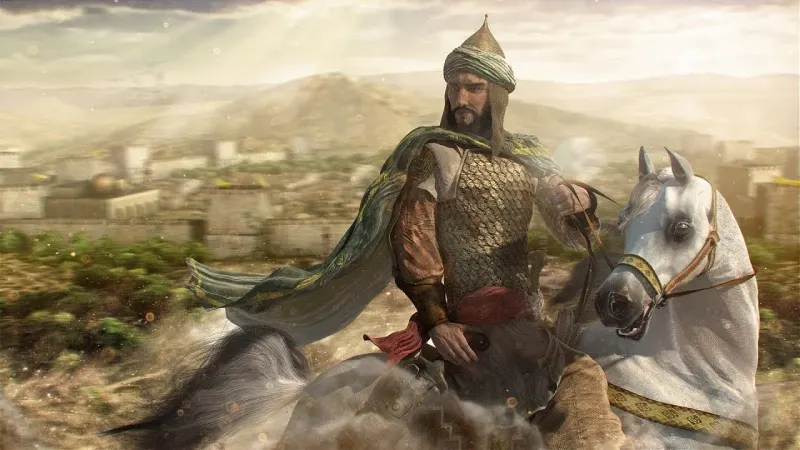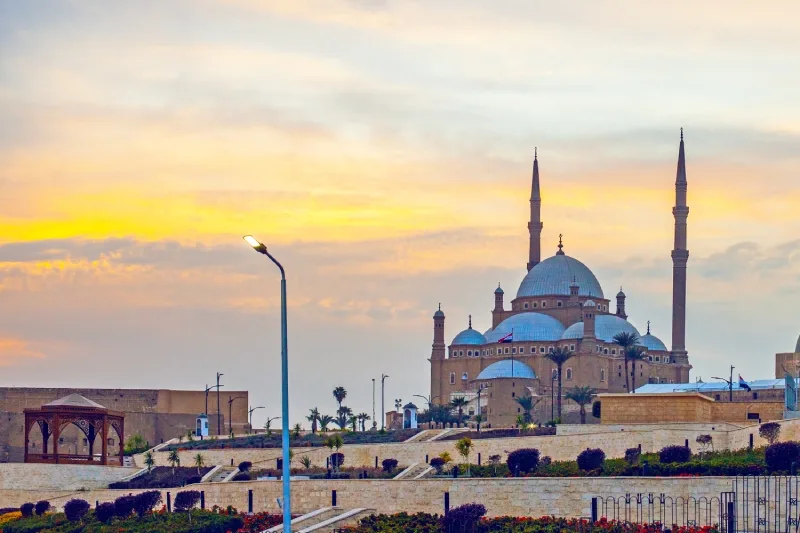Salahuddin Ayyubi
Saladin is the anglicized name for Salah Ad-Din, one of the most famous Muslim historical figures in the West. Coming from Sunni Kurdish origins in Syria.

Salahuddin Ayyubi, widely known in the West as Saladin, is one of the most admired historical figures in the Middle East and the wider world. His story blends military genius, political vision, and deep chivalry, making him a symbol of honor not only in Islamic history but also in global culture. Travelers exploring Egypt and the broader region often hear his name connected to major monuments, citadels, and medieval events that shaped the Middle East. Understanding who Salahuddin Ayyubi was adds valuable cultural context to any journey through Egypt’s heritage sites.

Who was Salahuddin Ayyubi?
Salahuddin Ayyubi (1137–1193 CE) was the founder of the Ayyubid Dynasty and one of the most influential leaders in Islamic and Middle Eastern history. Born in Tikrit, in modern-day Iraq, he grew up in a Kurdish family known for military service and close ties to the ruling Zengid dynasty. Although he was not originally expected to become a major military commander, Salahuddin Ayyubi’s intelligence, discipline, and sense of duty quickly set him apart.
Over time, he rose from a young military officer to the most powerful ruler in the region, controlling Egypt, Syria, the Hijaz, and large parts of the Levant. His name became eternally linked with the Crusades, especially the events leading to the recapture of Jerusalem in 1187, which established him as a heroic figure throughout the Islamic world.
Early Life and Background
Salahuddin Ayyubi’s early life was shaped by political instability and constant conflict in the Middle East. His father, Najm Al-Din Ayyub, served as a governor and military leader under the Zengid rulers. This environment exposed young Salahuddin Ayyubi to leadership, administration, and military strategy from an early age.
He was educated in:
- Islamic law
- Literature and theology
- Military sciences
- Horsemanship and strategy
Even though he came from a military family, Salahuddin Ayyubi was known for being thoughtful, calm, and disciplined rather than aggressive. He admired scholars, poets, and religious leaders, which helped form his balanced and wise approach to governance later in life.
Salahuddin Ayyubi is a legendary Muslim leader known for unifying Egypt and Syria, defeating the Crusaders, and recapturing Jerusalem in 1187.
Rise to Power in Egypt
Salahuddin Ayyubi’s rise truly began when he traveled to Egypt with his mentor and commander, Shirkuh, sent by the Zengid ruler Nur Al-Din. At that time, Egypt was under the weakening Fatimid Caliphate and suffering from political instability.
In 1169, after Shirkuh’s death, Salahuddin Ayyubi was appointed Vizier of Egypt—a surprising decision at the time because he was relatively young and new to Cairo’s political scene. However, he quickly proved his capability through strong leadership, fair governance, and successful military campaigns.
Key steps he took in Egypt included:
- Strengthening the army
- Reorganizing finances
- Ending the Fatimid Caliphate and restoring Sunni rule
- Expanding Egypt’s defenses against Crusader attacks
- Building major fortifications, including improvements to Cairo’s Citadel (later completed by his successors)
This period transformed him from a military leader into a statesman with enormous regional influence.
Unifying Egypt and Syria
After Nur Al-Din’s death, Salahuddin Ayyubi moved to Syria to stabilize the region and defend it against Crusader armies. Through diplomacy, military skill, and strategic marriage alliances, he gradually united Egypt and Syria under one rule.
This unification was essential because the Crusader states were strong and well-organized. Without unity, the Muslim lands would remain vulnerable. Salahuddin Ayyubi understood the need for a powerful, centralized government that could protect the region’s cities, trade routes, and religious sites.
By 1177–1186, he had consolidated his authority, forming a large and disciplined state known as the Ayyubid Sultanate.

Customize Your Dream Vacation!
Get in touch with our local experts for an unforgettable journey.
Plan Your Trip
The Battle of Hattin and the Liberation of Jerusalem
Salahuddin Ayyubi’s greatest achievement was his victory at the Battle of Hattin in 1187, a decisive event that changed the course of the Crusades. His military strategies—cutting off water sources, surrounding enemy troops, and using well-coordinated cavalry attacks—led to a major triumph.
Shortly after the battle, Salahuddin Ayyubi marched to Jerusalem, capturing the city peacefully. Unlike previous conquests, he allowed Christian civilians to leave safely and opened the city for pilgrims of all religions. His respectful treatment of Jerusalem’s population earned him admiration even from European writers.
This act became a defining moment in his career, showing his commitment to both justice and mercy.
Salahuddin Ayyubi’s Character and Values
What makes him unique is not only his military success but also his personality. Historical sources from both Arab and European writers describe him as:
- Generous and humble
- Deeply religious but tolerant
- Brave yet compassionate
- A leader who preferred negotiation over unnecessary bloodshed
- A ruler admired by both friends and enemies
Stories of his chivalry became famous across Europe, especially during his interactions with King Richard the Lionheart during the Third Crusade. Even though they were opponents, the two leaders exchanged gifts and showed mutual respect—rare during medieval warfare.

His Role in Egyptian History
For travelers visiting Egypt, Salahuddin Ayyubi’s influence can be seen in several iconic sites, especially in Cairo.
Salah Al-Din Citadel (Cairo Citadel)
One of his major contributions was the construction and expansion of fortifications on Cairo’s hills. While later rulers completed most of what visitors see today, the Citadel still carries Salahuddin Ayyubi’s name because he planned and initiated the project to protect Egypt from Crusader invasions.
Urban Reforms
He restructured Cairo’s defense system, improved water supply routes, and strengthened military organization, leaving a long-term legacy that shaped the city’s medieval development.
The Ayyubid Dynasty
Salahuddin Ayyubi’s descendants ruled large parts of the Middle East for more than 80 years after his death. The Ayyubids built schools, mosques, fortresses, and trade networks that promoted learning, culture, and economic growth across Egypt and Syria.
Key achievements of the dynasty include:
- Spreading Sunni Islamic education
- Strengthening trade routes from the Red Sea to the Mediterranean
- Supporting architectural development
- Encouraging scientific and literary progress
Travelers exploring Egypt today often encounter Ayyubid-era structures in Cairo, Aswan, and the Red Sea region.

Death and Burial
Salahuddin Ayyubi passed away in Damascus in 1193 at the age of 55. His death marked the end of an era, but his reputation continued to grow. He was buried near the Umayyad Mosque in Damascus, where his modest tomb reflects his humble character.
Despite ruling one of the largest empires of his time, he died with very little personal wealth, as he had given away most of it in charity and military support.
Salahuddin Ayyubi remains one of history’s most respected leaders, remembered for his courage, wisdom, and humanity. His achievements shaped the political and cultural landscape of the Middle East, and his influence continues to be felt today in Egypt and beyond. Whether studying his military victories or exploring monuments connected to his name, visitors gain a richer understanding of the region’s story.
His life is a reminder that true leadership is built on justice, compassion, and vision—qualities that made Salahuddin Ayyubi a timeless figure admired across centuries.
He became Vizier of Egypt, ended the Fatimid Caliphate, built fortifications like the Cairo Citadel, and reformed the country’s administration.
He became Vizier in 1169 and ruled Egypt until he died in 1193, laying the foundation for the Ayyubid Dynasty.
He is buried near the Umayyad Mosque in Damascus, Syria, in a modest tomb that reflects his humble character.
Visitors can explore the Cairo Citadel, Ayyubid walls, medieval gates, and historic districts throughout Cairo and surrounding regions.
It is Salahuddin Ayyubi’s major fortress in Cairo, designed to protect Egypt from Crusader attacks and showcase Ayyubid architecture.
Yes, he organized Egyptian and Syrian forces to confront Crusaders and later led them to victory at the Battle of Hattin.


















